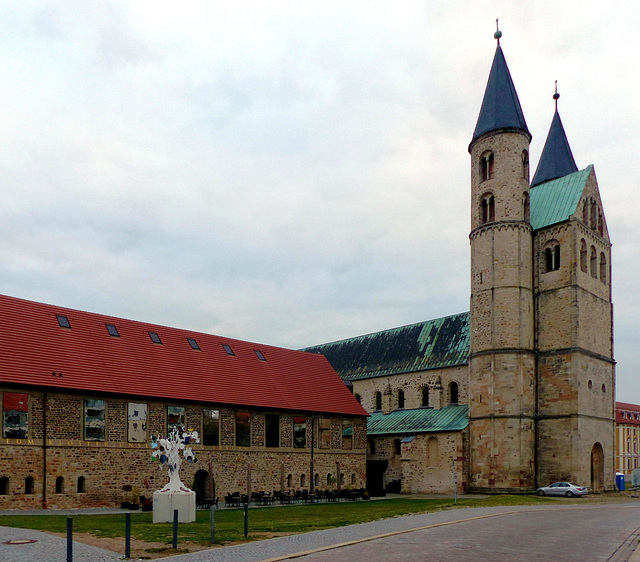Magdeburg - St. Sebastian
Magdeburg - St. Sebastian
Magdeburg - St. Sebastian
Helmstedt - Academia Julia
Helmstedt - Academia Julia
Helmstedt - Academia Julia
Helmstedt - Bus stop
Helmstedt - St.-Stephani
Helmstedt
Dortmund - St. Reinoldi
Dortmund - St. Reinoldi
Dortmund - St. Reinoldi
Dortmund - St. Reinoldi
Dortmund - St. Reinoldi
Dortmund - St. Reinoldi
Dortmund - Marienkirche
Dortmund - Marienkirche
Dortmund - Marienkirche
Dortmund - Marienkirche
Dortmund - Marienkirche
Dortmund - Marienkirche
Dortmund - Marienkirche
Dortmund - Marienkirche
Magdeburg - Dom
Magdeburg - Dom
Magdeburg - Dom
Magdeburg - Dom
Magdeburg - Dom (PiP)
Magdeburg - Dom
Magdeburg - Dom
Magdeburg - Dom
Magdeburg - Dom (PiP)
Magdeburg - Dom
Magdeburg - Dom
Magdeburg - Dom
Magdeburg - Dom
Magdeburg - Dom
Magdeburg - Korkmaz Imbiss
Poznań - Plywalnija Miejska
Poznań - Kościół św. Wojciecha
Poznań - Kościół św. Wojciecha
Poznań - Kościół Najświętszej Marii Panny Wspomoży…
Poznań - Kościół św. Antoniego i klasztor francisz…
Poznań - Kościół św. Antoniego i klasztor francisz…
Poznań - Zamek Królewski
Location
Keywords
Authorizations, license
-
Visible by: Everyone -
All rights reserved
-
46 visits
Magdeburg - Kloster Unser Lieben Frauen


Founded by Charlemagne in 805 as Magadoburg, the town was fortified in 919 by King Henry the Fowler against the Magyars and Slavs. In 929 King Otto I granted the city to his English-born wife Edith as dower. At her death, Queen Edith was buried in the crypt of the Benedictine abbey of Saint Maurice, later rebuilt as the cathedral. In 937, Magdeburg was the seat of a royal assembly. Otto I was buried as well in the cathedral.
In 1035 Magdeburg received a patent giving the city the right to hold trade exhibitions and conventions. This was the basis of town law to become known as the Magdeburg rights. These laws were adopted and modified throughout Central and Eastern Europe.
In the 13th century, Magdeburg became a member of the Hanseatic League. With more than 20,000 inhabitants Magdeburg was one of the largest cities in the Holy Roman Empire.
During the Thirty Years' War (1618–1648) Magdeburg was raided and probably 20.000 inhabitants lost their lives. A small group of 4000 people survived the "Sack of Magdeburg" by seeking refuge in the cathedral. Begging on his knees before the conqueror the head priest saved them.
-
The first ecclesiastical community was founded around 1015 as a collegiate monastery (Marienstift) This "Liebfrauenstift" was rebuilt from 1063 on. A three-nave, flat-roofed basilica was built. Construction work on the new basilica was delayed but resumed after the consecration of Norbert of Xanten (St. Norbert/Premontre) as archbishop.
In 1129, Archbishop Norbert transferred the monastery to the newly founded Premonstratensian Order. This canonry became, according to Prémontré, practically the mother monastery of the order in the eastern area of distribution. In this period the completion of the church took place with the erection of the two steeples.
After the fire that damaged the cathedral on Good Friday in 1207, the collegiate church was hastily elevated to the status of a cathedral, so that the archbishop at Easter celebrated mass here. Between 1220 and 1240 alterations were made to introduce Gothic elements. However, the Romanesque character of the church was preserved.
Today, the buildings are used as the municipal art museum and concert hall.
In 1035 Magdeburg received a patent giving the city the right to hold trade exhibitions and conventions. This was the basis of town law to become known as the Magdeburg rights. These laws were adopted and modified throughout Central and Eastern Europe.
In the 13th century, Magdeburg became a member of the Hanseatic League. With more than 20,000 inhabitants Magdeburg was one of the largest cities in the Holy Roman Empire.
During the Thirty Years' War (1618–1648) Magdeburg was raided and probably 20.000 inhabitants lost their lives. A small group of 4000 people survived the "Sack of Magdeburg" by seeking refuge in the cathedral. Begging on his knees before the conqueror the head priest saved them.
-
The first ecclesiastical community was founded around 1015 as a collegiate monastery (Marienstift) This "Liebfrauenstift" was rebuilt from 1063 on. A three-nave, flat-roofed basilica was built. Construction work on the new basilica was delayed but resumed after the consecration of Norbert of Xanten (St. Norbert/Premontre) as archbishop.
In 1129, Archbishop Norbert transferred the monastery to the newly founded Premonstratensian Order. This canonry became, according to Prémontré, practically the mother monastery of the order in the eastern area of distribution. In this period the completion of the church took place with the erection of the two steeples.
After the fire that damaged the cathedral on Good Friday in 1207, the collegiate church was hastily elevated to the status of a cathedral, so that the archbishop at Easter celebrated mass here. Between 1220 and 1240 alterations were made to introduce Gothic elements. However, the Romanesque character of the church was preserved.
Today, the buildings are used as the municipal art museum and concert hall.
kiiti, Marco F. Delminho, Andy Rodker have particularly liked this photo
- Keyboard shortcuts:
Jump to top
RSS feed- Latest comments - Subscribe to the comment feeds of this photo
- ipernity © 2007-2024
- Help & Contact
|
Club news
|
About ipernity
|
History |
ipernity Club & Prices |
Guide of good conduct
Donate | Group guidelines | Privacy policy | Terms of use | Statutes | In memoria -
Facebook
Twitter

Sign-in to write a comment.